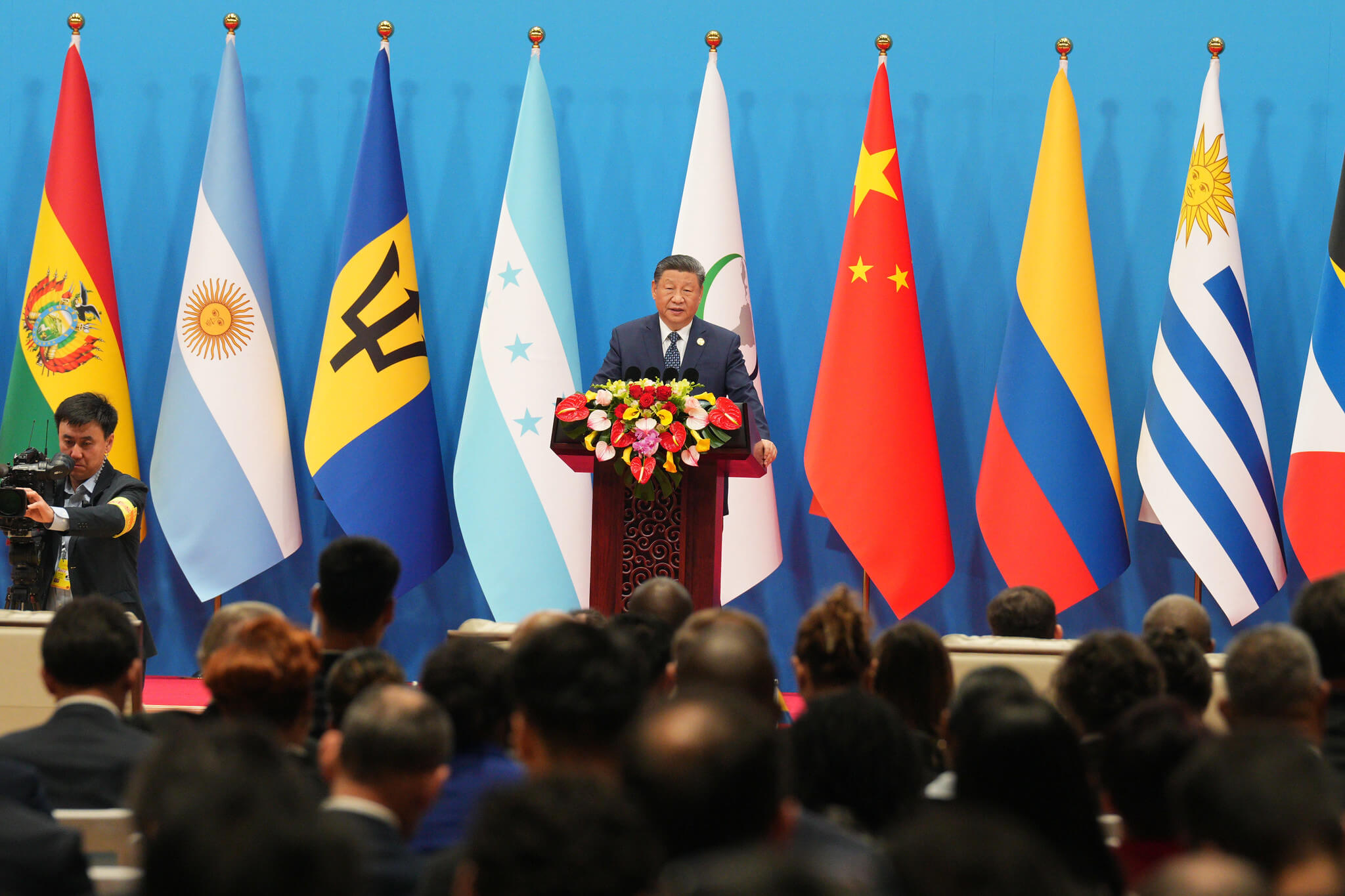China committed to granting a line of credit to Latin America and the Caribbean
Photo: Fotografía oficial de la Presidencia de Colombia.
According to a report by Reuters, within the framework of the China-CELAC Forum, on the first day of the meeting, the President of the People’s Republic of China, Xi Jinping, pledged to grant a credit line of approximately 9.2 billion US dollars to the countries of Latin America and the Caribbean, in addition to announcing new investments for infrastructure projects.
Specifically, the credit line will consist of a fund of 66 billion yuan, equivalent to 9.18 billion US dollars, and will be disbursed to the member states of the Community of Latin American and Caribbean States (CELAC). However, this amount represents less than half of what the Asian country offered during the inaugural forum in 2015.
During his speech, President Xi Jinping stated, “China and the countries of Latin America and the Caribbean are important members of the Global South. Independence is our glorious tradition, development and revitalization are our natural right, and equity and justice are our common pursuit.”
Additionally, the Chinese president pledged to the presidents of Colombia, Gustavo Petro, and Brazil, Lula da Silva, that the People’s Republic of China will begin increasing its imports from Latin America and promote the participation of Chinese companies interested in investing in the region. Xi also announced that the visa requirement for entry into China would be waived for five countries in Latin America and the Caribbean.
In recent years, the Asian country has sought to strengthen its ties with Latin America and the Caribbean with the aim of displacing the United States as the region’s main development partner. Nevertheless, its strategy based on the Belt and Road Initiative has faced challenges in several nations.
Another reason for the People’s Republic of China’s focus on this region is the fact that, of the twelve countries that still maintain diplomatic relations with Taiwan, seven are located in Latin America and the Caribbean. This factor has prompted the Asian country to reinforce its relations in the area with the aim of diplomatically isolating Taiwan and promoting the “One China” principle.
Some of the countries that recognize Taiwan sent representatives to the forum, such as Saint Lucia and Haiti. In addition, Panama, which has distanced itself from China and decided not to renew its participation in the Belt and Road Initiative, was represented by its ambassador in Beijing.
According to analysts, although the credit line announced by President Xi Jinping will be beneficial for many countries in the region, its usefulness for servicing external debt will be limited, as such debts are denominated in US dollars.
On this point, Eric Olander, co-founder of the China-Global South Development Project, remarked, “Many more yuan-based deals like this are being made, particularly credit-swap agreements that make it easier for the borrowing country to transact in RMB instead of the US dollar.”
Furthermore, it is worth noting that this forum took place in the context of global trade tensions marked by tariffs, which has led several Latin American and Caribbean nations to seek better trade terms with the United States.
In this regard, the President of Brazil, Lula da Silva, stated, “It is important to understand that the fate of Latin America depends on no one else. It does not depend on President Xi Jinping, it does not depend on the United States, it does not depend on the European Union; it depends solely and simply on whether we want to be great or remain small.”
Nevertheless, the Brazilian position indicates a growing alignment with the People’s Republic of China, given that the Asian country is the world’s largest food importer. In that sense, the export of Brazilian agricultural products represents a strategic economic opportunity.
During the bilateral meeting between the presidents of Brazil and China, several cooperation agreements were signed in sectors such as nuclear energy, technical cooperation, and agriculture.
Last but not least, it is important to mention that, according to Chinese customs data, trade between China and CELAC countries reached a value of 515 billion US dollars in 2024. Of that total, Chinese imports amounted to 240 billion, at least half of which originated from Brazil.
Main Source:
China offers Latin America and the Caribbean billions in bid to rival US influence – Reuters
Related News:
Chinese Ports in Latin America: A New Risk to Regional Security?
Latin American Steel Producers Aim to Reduce Dependence on China
The five Latin American countries leading exports to China
You may be interested in:
¿Cómo China silencia su influencia en América Latina? – Voz de América

